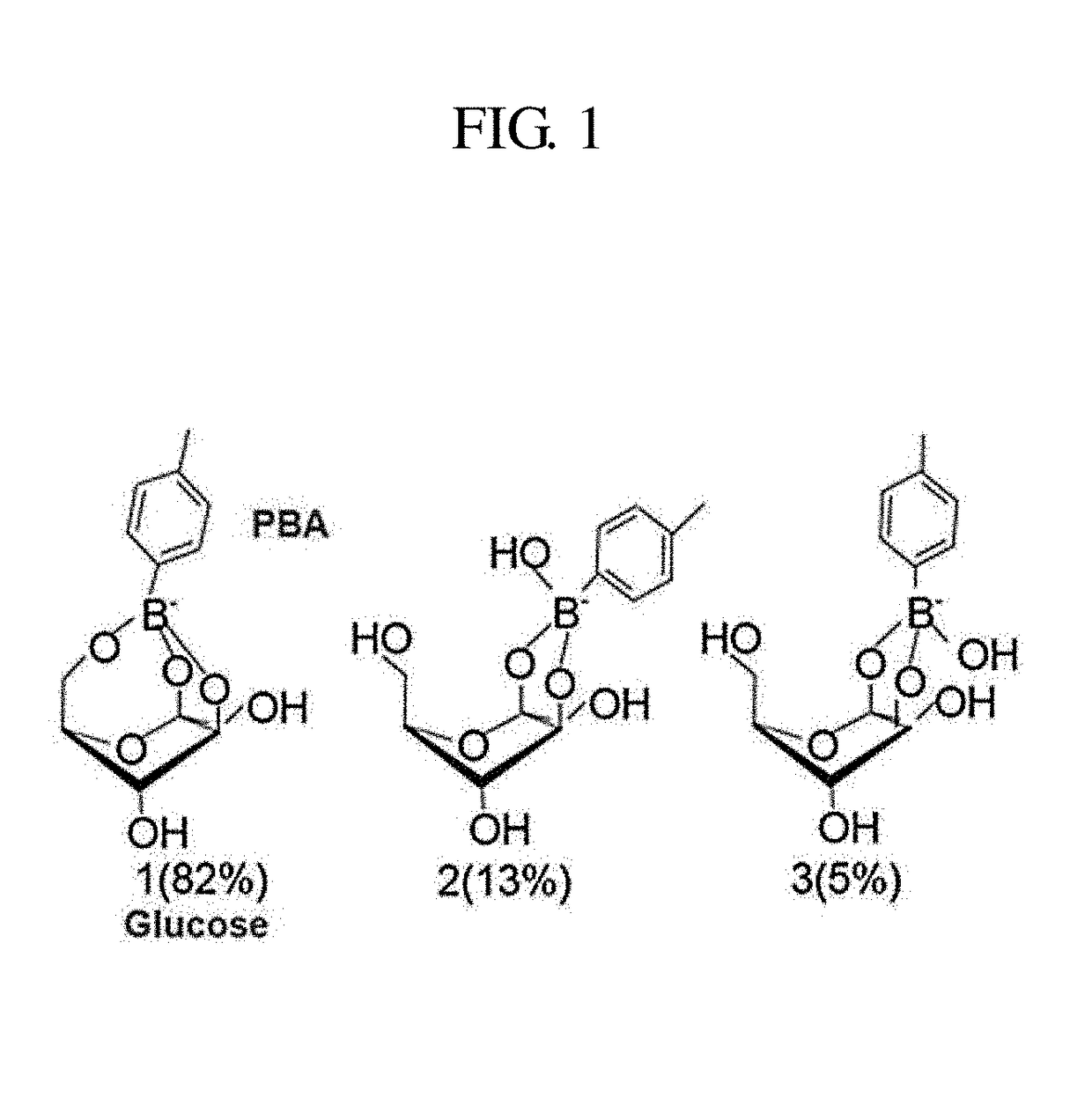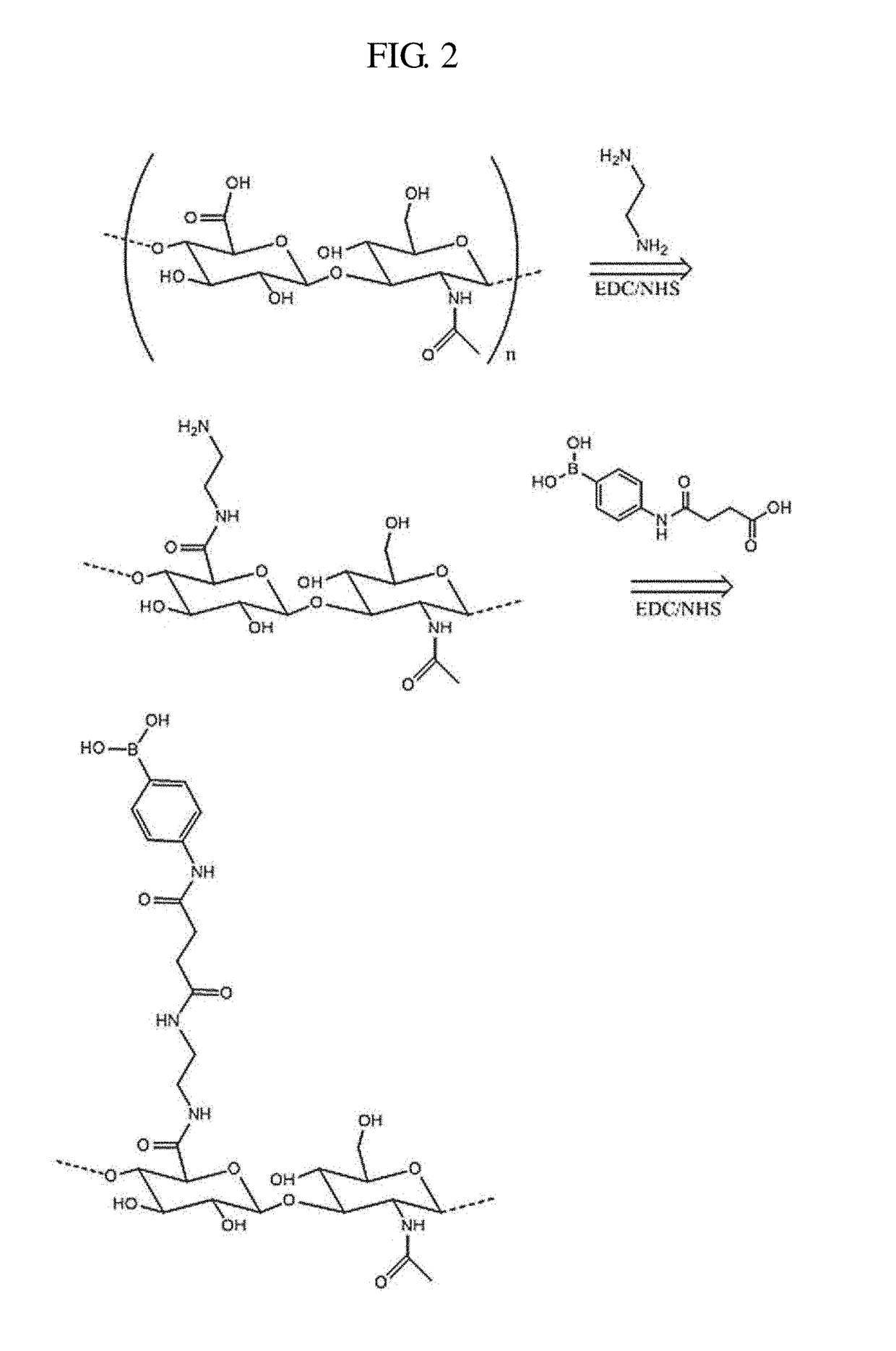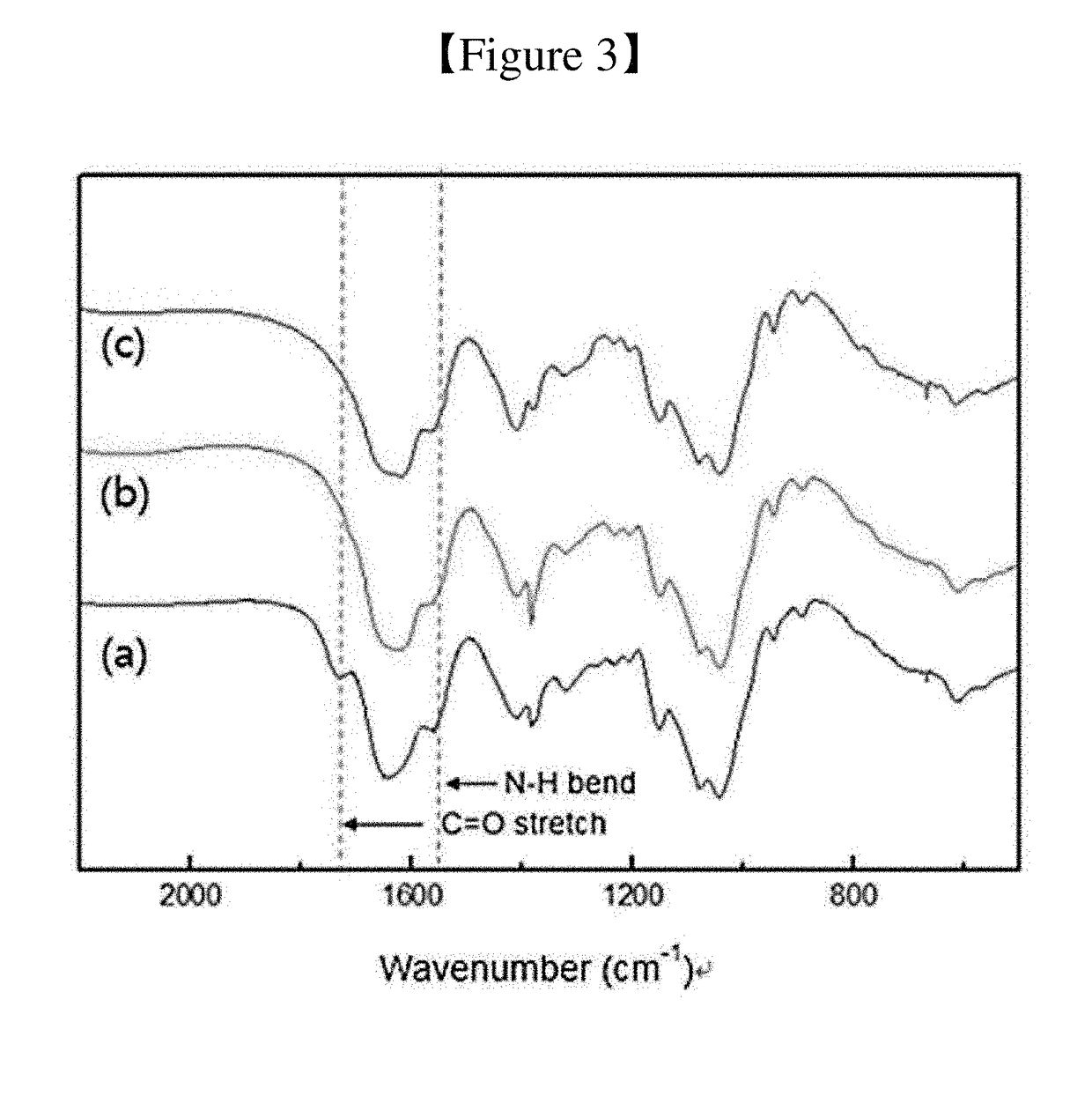Environment-responsive hyaluronic acid nanoparticles
a hyaluronic acid nanoparticle, environment-responsive technology, applied in the direction of group 3/13 element organic compounds, instruments, drug compositions, etc., can solve the problems of destroying normal cells as well as cancer cells, no application of simultaneous cancer diagnosis and therapy through cell metabolism regulation, etc., to achieve the effect of induced cancer treatment of energy deficiency in cancer cells
- Summary
- Abstract
- Description
- Claims
- Application Information
AI Technical Summary
Benefits of technology
Problems solved by technology
Method used
Image
Examples
example 1
Preparation of Glucose-Responsive Nanoparticles
[0099]PBA was covalently conjugated to the backbone of hyaluronic acid (HA) by carbodiimide chemistry to prepare glucose-responsive nanoparticles. Hereinafter, the glucose-responsive nanoparticles may be referred to as HA-PBA nanoparticles or HAPBA nanoparticles.
[0100]In the present invention, the contents of the respective components may be adjusted depending on the desired degree of substitution (DS).
[0101](1) Hyaluronic Acid Modification (Preparation of Hyaluronate-Ethylenediamine Conjugate)
[0102]Sodium hyaluronate was dissolved in an MES buffer (pH 6.5) to prepare a solution with 1% (w / w) concentration. Thereafter, ethylenediamine was added thereto, and EDC and sulfo-NHS were added to the solution. The resulting mixture was reacted overnight at room temperature, and then dialyzed with distilled water for 3 days to remove residual reagents. After the dialysis, the solution was freeze-dried. Thereby, an amine group was introduced into...
experimental example 1
Confirmation of Formation of Hyaluronic Acid Complex
[0111]The formation of the hyaluronic acid complex was confirmed using FTIR and 1H-NMR.
[0112]The conjugation of PBA to HA was measured at a range of 500 to 2,200 cm-1 using FTIR spectroscopy (Nicolet 6700, Thermo Scientific).
[0113]FIG. 3 shows the results of FTIR analysis of the hyaluronic acid complex. In FIG. 3 show the results of analysis of (a) the HA, (b) the hyaluronate-ethylenediamine conjugate, and (c) the hyaluronic acid complex.
[0114]As shown in FIG. 3, (b) and (c), it can be seen that the C═O stretch peaks at 1,730 cm-1 decreased because the carboxyl group of HA was consumed by the conjugation. The absorption peak at 1,560 cm-1 represents an N—H bond corresponding to the formation of an amine bond.
[0115]The conjugation of PBA to HA was also able to be confirmed by 1H-NMR spectroscopy.
[0116]FIG. 4 shows the results of 1H-NMR analysis of (a) the hyaluronic acid, (b) the boronic acid compound, and (c) the hyaluronic acid co...
experimental example 2
Confirmation of Size and Morphology of Nanoparticles
[0119]The degree of substitution (DS) of PBA conjugated to HA was analyzed using an Elemental Analyzer (FLASHEA 1112). The particle diameter of the HA-PBA nanoparticles (1 mg / mL) was measured using dynamic light scattering (DLS; Nano ZS, Malvern Instruments). Also, the morphology of the HA-PBA nanoparticles was observed by atomic force microscopy (AFM). The HA-PBA nanoparticles were placed on a surface of a silicon water, and dried for 2 hours before capturing images.
[0120]The results of measurements are listed in the following Table 1.
TABLE 1HA-PBA 20HA-PBA 33Theoretical DS50100Actual DS2033Diameter (nm)257 ± 54225 ± 110
[0121]The self-assembled HA-PBA nanoparticles were prepared under aqueous conditions. The average diameters of the nanoparticles were 257 nm and 223 nm, respectively, when the nanoparticles had degrees of substitution (DS) of 20 and 33.
[0122]FIG. 5 shows an AFM image for identifying the morphology of the synthesize...
PUM
| Property | Measurement | Unit |
|---|---|---|
| Diameter | aaaaa | aaaaa |
| Diameter | aaaaa | aaaaa |
| Percent by mole | aaaaa | aaaaa |
Abstract
Description
Claims
Application Information
 Login to View More
Login to View More - R&D
- Intellectual Property
- Life Sciences
- Materials
- Tech Scout
- Unparalleled Data Quality
- Higher Quality Content
- 60% Fewer Hallucinations
Browse by: Latest US Patents, China's latest patents, Technical Efficacy Thesaurus, Application Domain, Technology Topic, Popular Technical Reports.
© 2025 PatSnap. All rights reserved.Legal|Privacy policy|Modern Slavery Act Transparency Statement|Sitemap|About US| Contact US: help@patsnap.com



